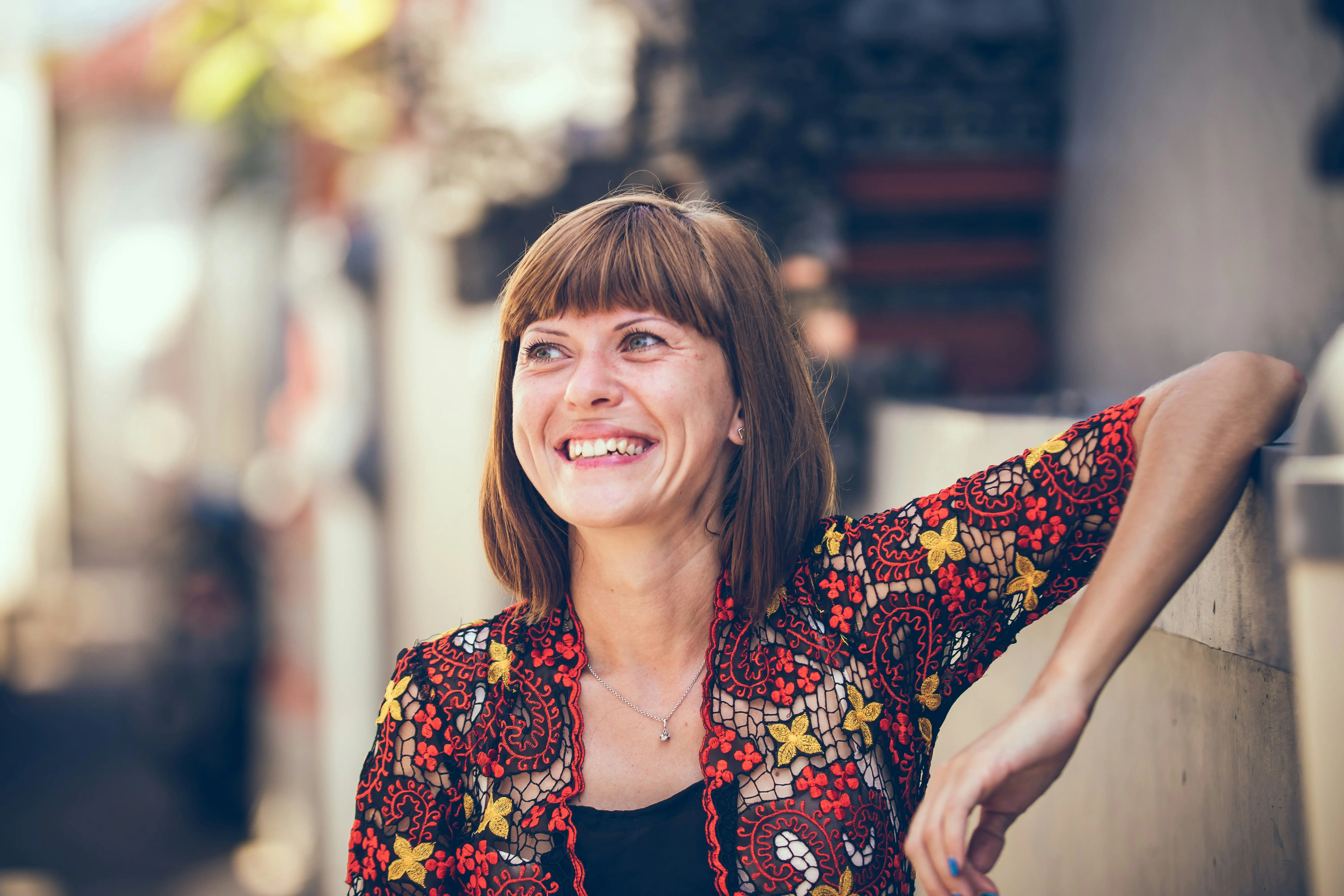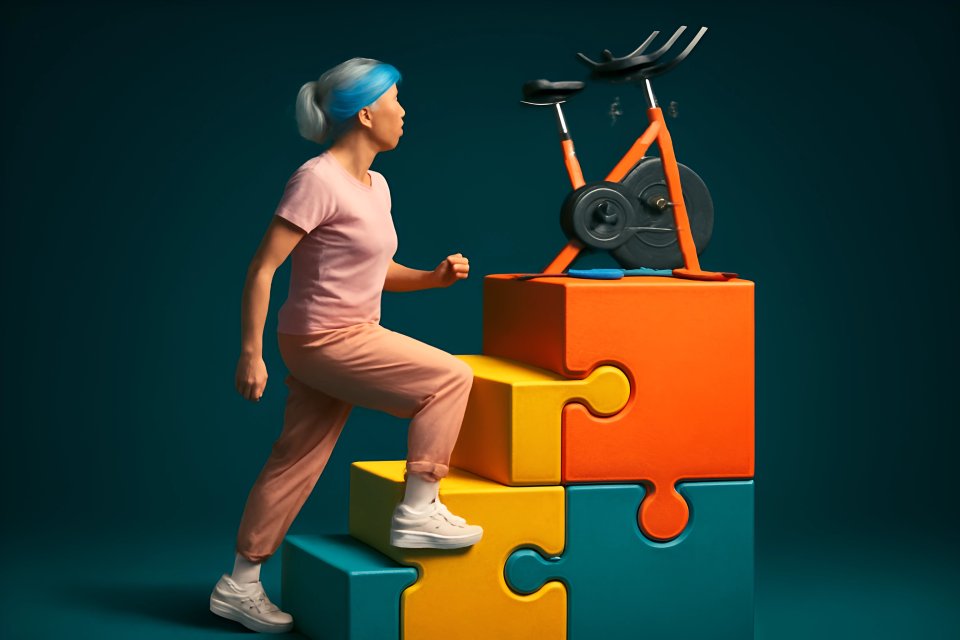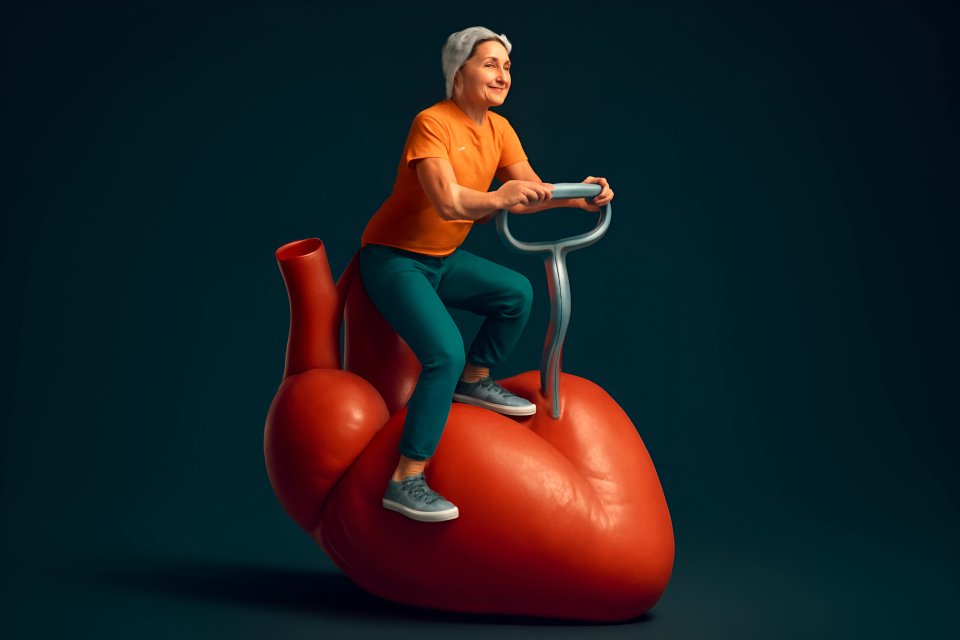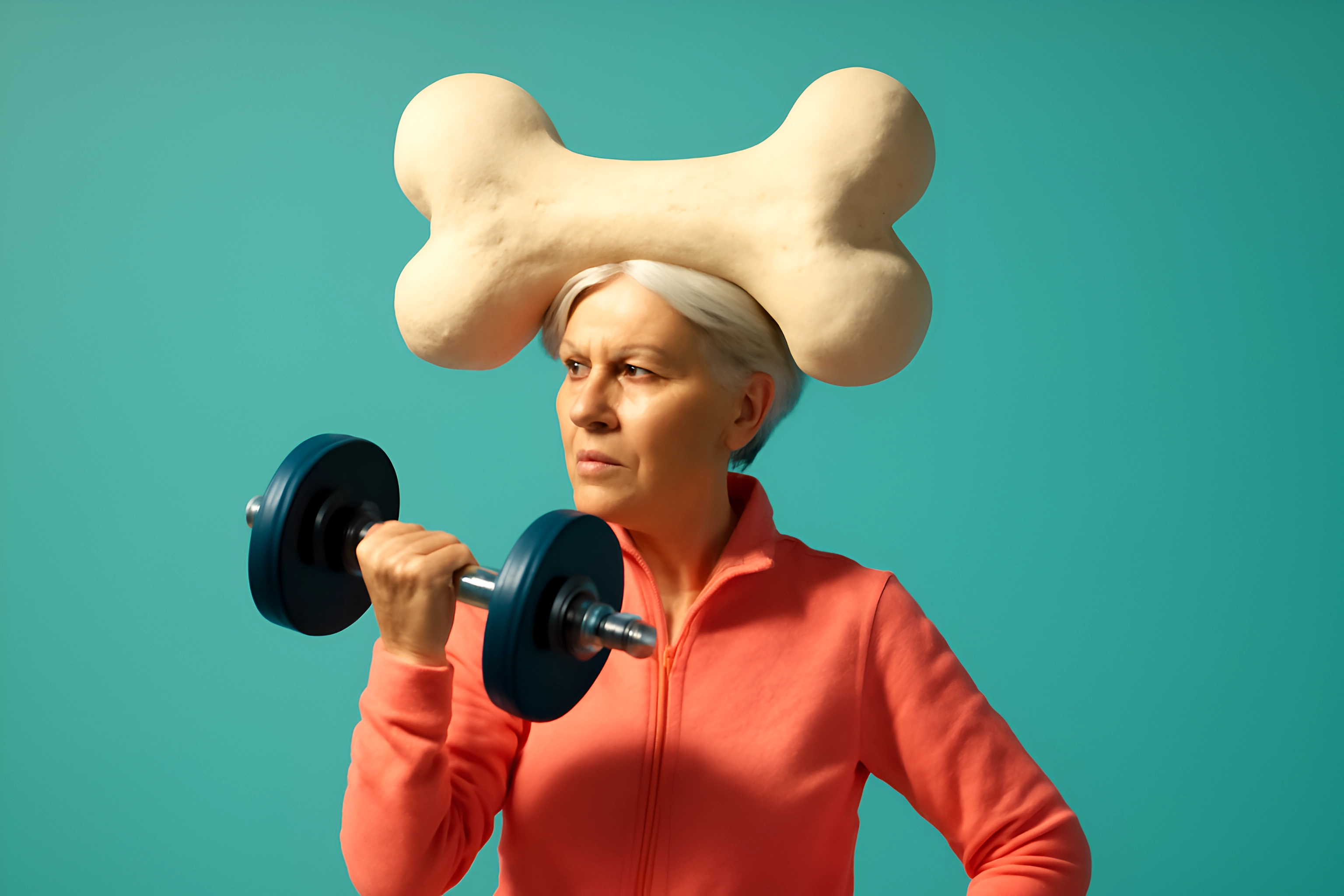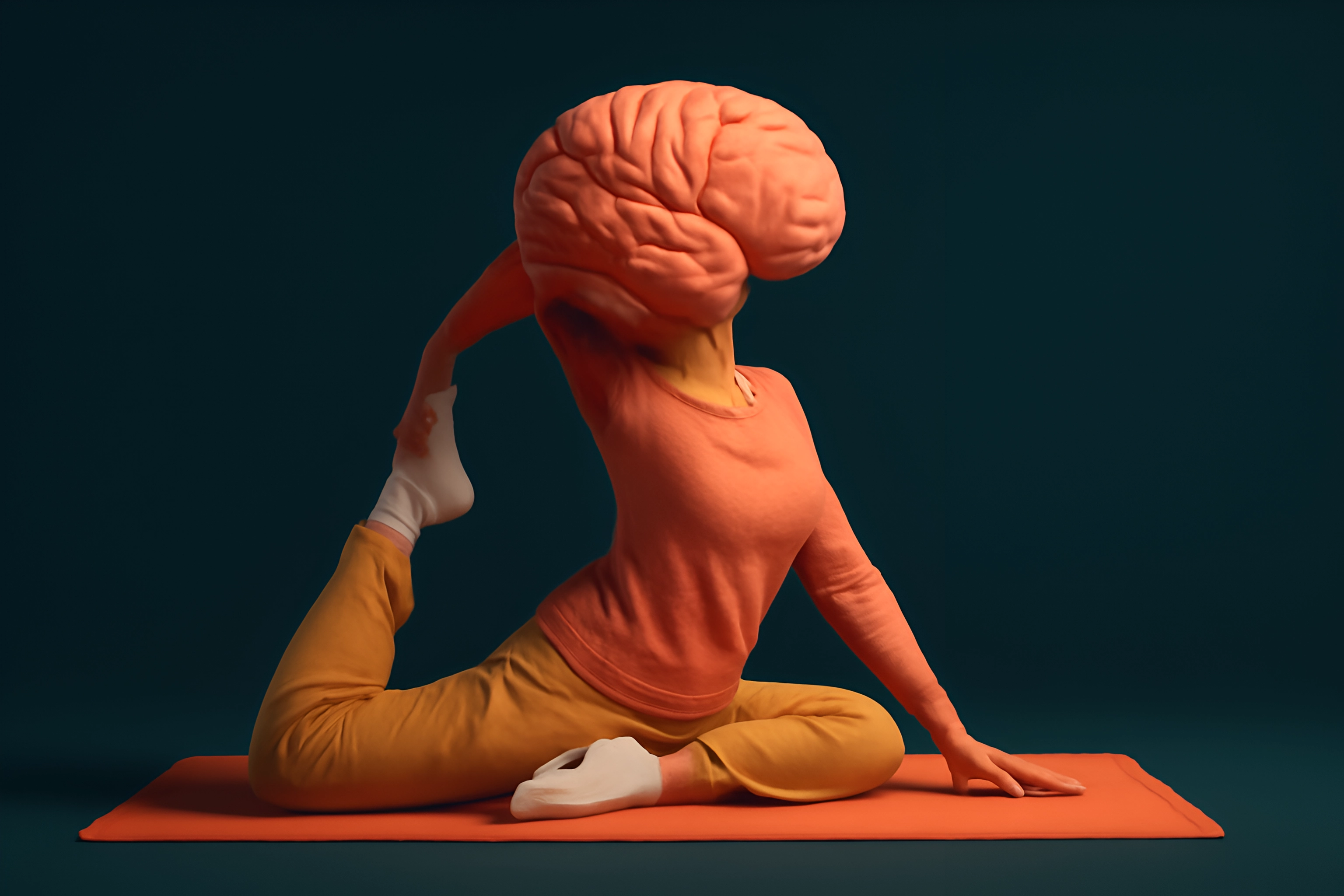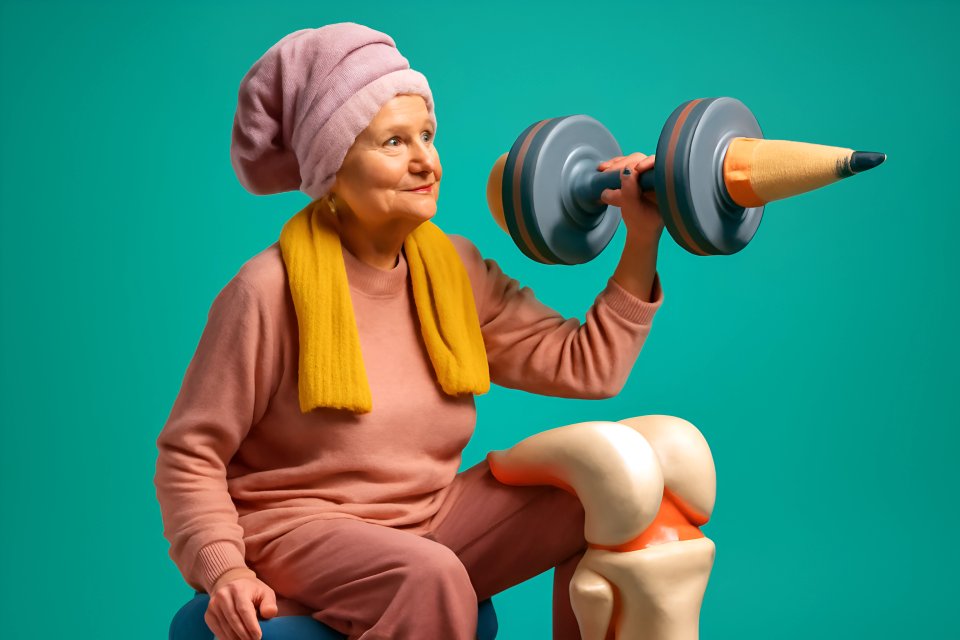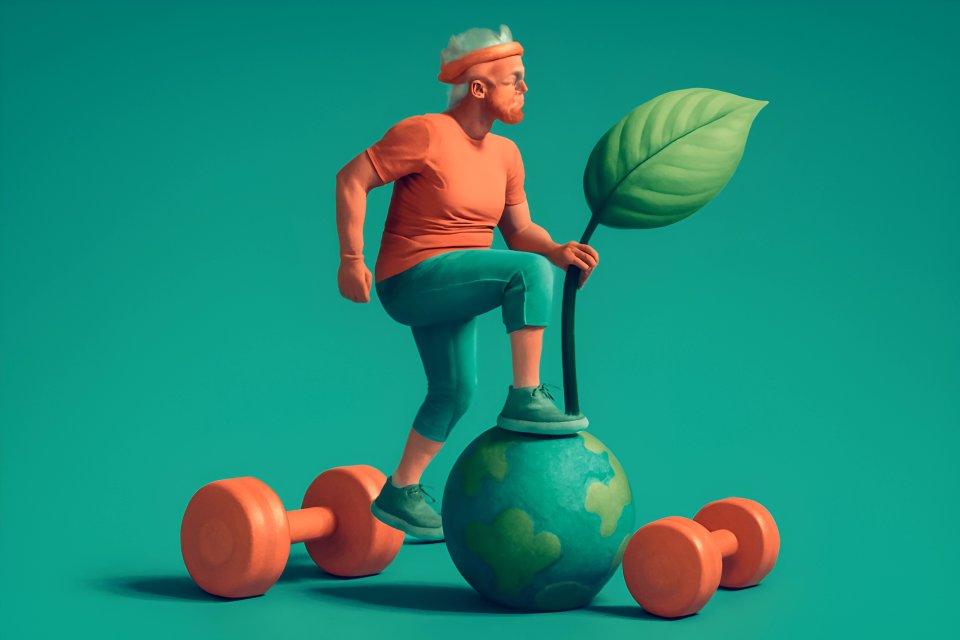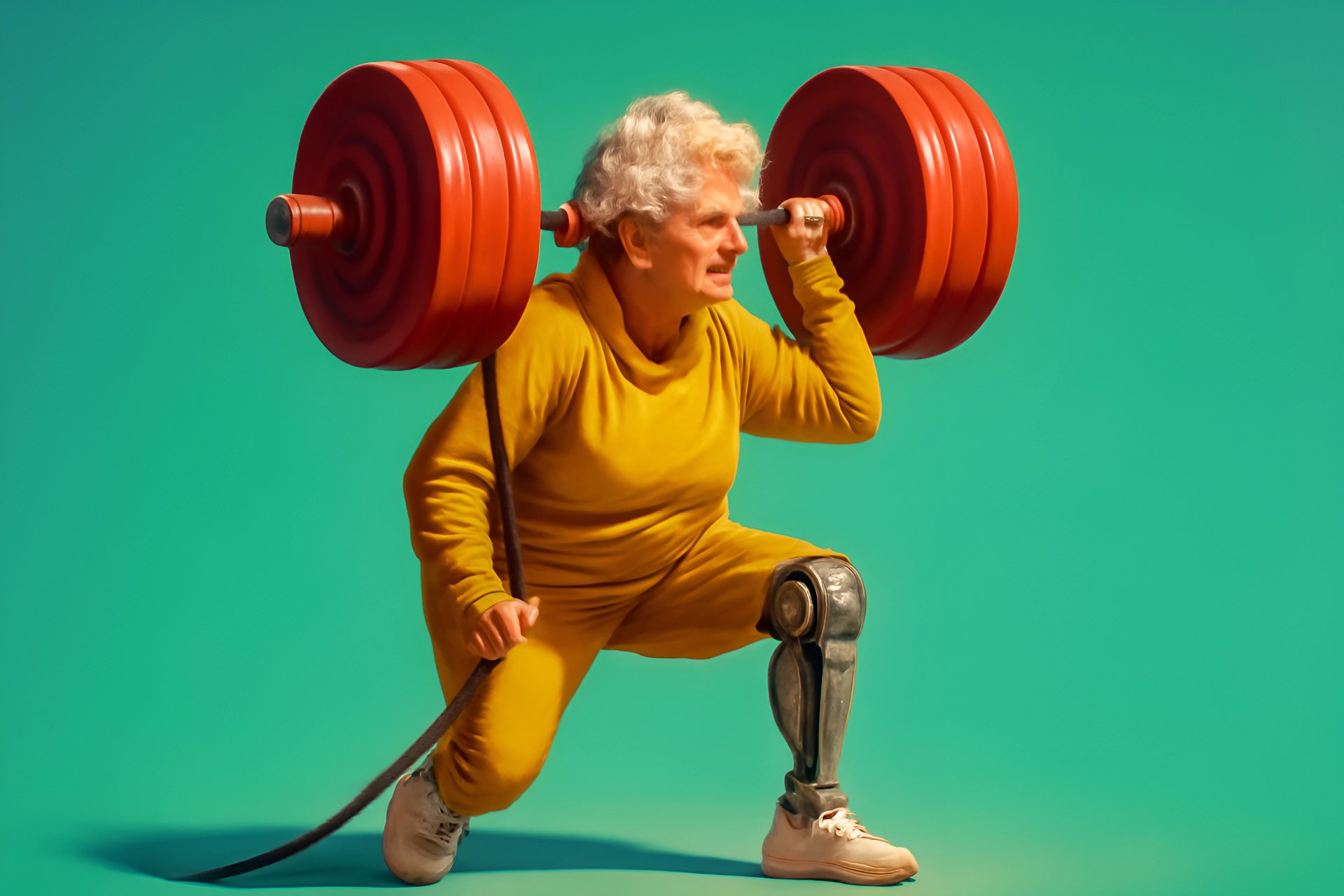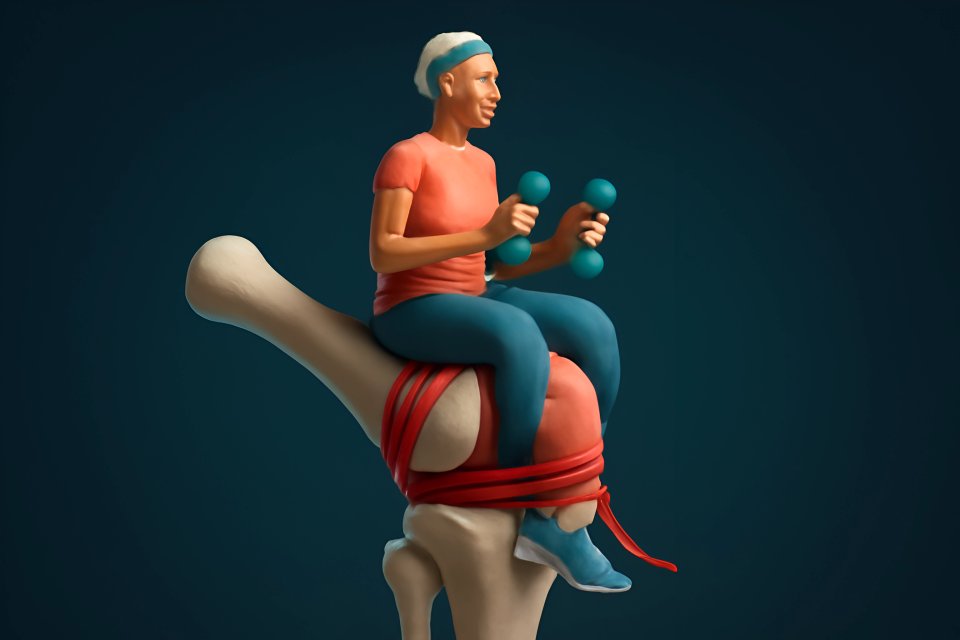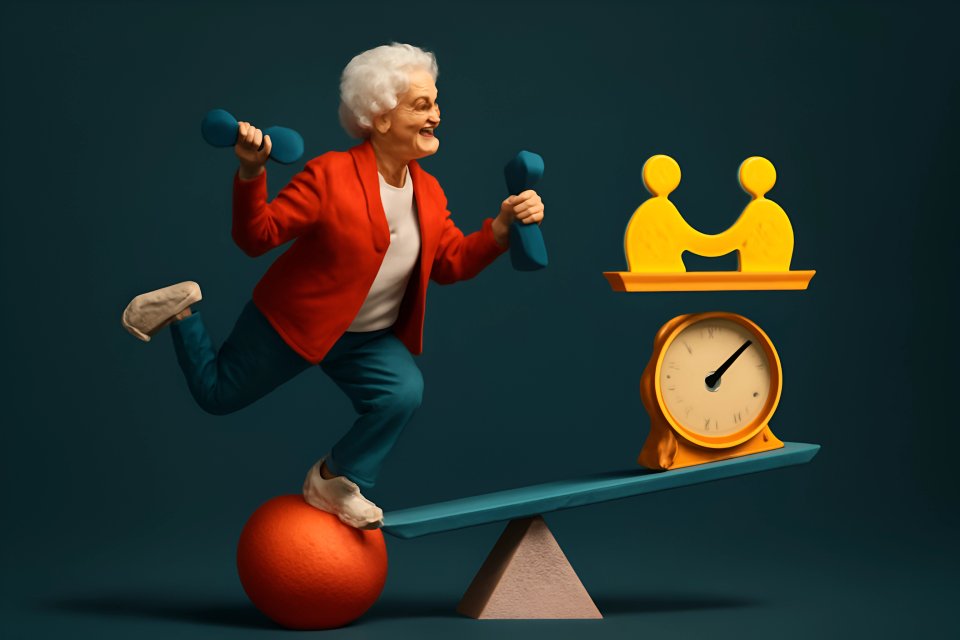
Feeling a little stiffer in the mornings? Noticing that stress seems to stick around longer than it used to? You're not alone, and there's a gentle, powerful tool that can help you reclaim your body and calm your mind.
Forget the images of impossibly flexible twenty-somethings in pretzel-like poses. Real yoga is a time-tested practice for enhancing mobility, building strength, and finding a sense of peace—and it's perfectly suited for this chapter of your life. It’s about honoring your body, not forcing it into submission.
This is your official yoga for seniors beginner guide over 50. We'll walk you through everything you need to know, from the incredible, science-backed benefits to safe, simple poses you can try today. No prior experience or extreme flexibility is required, just a willingness to breathe, move, and feel better.
Why Yoga is a Game-Changer for Health and Vitality After 50
At its heart, yoga is not just exercise; it's a moving meditation that connects your breath to your body. This simple act of mindful movement is what unlocks a cascade of benefits that directly combat the challenges of aging. It’s a secret weapon for staying vibrant, strong, and independent for years to come.
Imagine feeling more stable on your feet, sleeping more soundly, and letting daily worries roll off your back. That’s the power you can unlock. Research from top institutions confirms what yogis have known for centuries—this practice works.
Here are the key ways yoga can transform your health:
- Boosts Flexibility and Mobility: Gentle, sustained stretches lubricate your joints and lengthen tight muscles, easing the stiffness that can creep in over time. This is your ticket to more
flexibility through yoga, making everything from gardening to playing with grandkids easier and more enjoyable. - Improves Balance and Stability: Yoga is a powerhouse for building the small, stabilizing muscles that protect you from falls. Studies show that consistent practice can improve balance stability by up to 40% in seniors, giving you the confidence to move freely and securely.
- Reduces Stress and Anxiety: The deep, intentional breathing in yoga activates your body's relaxation response. This practice of
stress reduction yogacan lead to a 15% average reduction in systolic blood pressure by calming the nervous system and lowering levels of the stress hormone cortisol. - Supports Bone Health: Many foundational yoga poses are weight-bearing, which means they place gentle, productive stress on your bones. This process can stimulate bone remodeling and help maintain crucial bone density, a key factor in preventing osteoporosis.
- Enhances Sleep Quality: By quieting the mental chatter and relaxing the body, an evening yoga routine can be a powerful tool for better rest. The calming effect on the nervous system paves the way for deeper, more restorative sleep, helping you wake up refreshed and energized.
Getting Started Safely: Your Pre-Practice Checklist
Your safety and comfort are the number one priority. The goal of yoga is to feel good, and that starts with setting yourself up for success before you even step onto the mat. This isn't about pushing through pain; it's about listening to your body's wisdom.
First and foremost, it is absolutely crucial to consult your doctor before beginning any new exercise program. This is especially important if you are managing pre-existing conditions like high blood pressure, heart disease, osteoporosis, or arthritis. Your doctor can provide personalized advice and help you understand any movements you should modify or avoid, ensuring your practice supports your health without risk.
The golden rule of yoga is to listen to your body and honor its signals. The old mantra of "no pain, no gain" has no place here; our philosophy is no pain, all gain. If you feel any sharp, pinching, or jarring pain, you must gently back out of the pose. The magic happens in the zone of gentle stretching, not straining.
You don't need a closet full of expensive gear to begin. Here are the essentials, along with simple household items you can use instead:
- A non-slip yoga mat: This provides cushioning and grip. If you don't have one, a carpeted, clutter-free area in your home works well.
- A sturdy chair: A simple, armless dining chair is one of the best tools for a beginner. It provides support for balance and is the foundation of an entire practice known as
chair yoga for seniors. - Pillows or folded blankets: These can be placed under your knees or seat to provide cushioning and make poses more comfortable.
- A belt or towel: A bathrobe belt or a simple dish towel can be used as a strap to help you gently deepen stretches without straining.
7 Foundational (and Safe!) Yoga Poses for Seniors
Let's begin with some of the most accessible and beneficial poses. We'll provide step-by-step instructions and a senior-friendly modification for each one, ensuring you can practice with total confidence. Remember to breathe deeply and move slowly.
Mountain Pose (Tadasana)
Benefits: This is the blueprint for good posture. It improves balance, grounds you in your body, and builds foundational awareness.
How-To:
- Stand with your feet hip-width apart, distributing your weight evenly across both feet.
- Let your arms hang naturally at your sides, palms facing forward to open the chest.
- Gently engage your thigh and core muscles, lengthen your spine, and relax your shoulders down and away from your ears.
- Breathe deeply for 5-8 breaths.
Senior-Friendly Modification: Practice with your back against a wall for support and feedback on your alignment. You can also stand next to a sturdy chair and place one hand on it for extra stability.
Chair Pose (Utkatasana)
Benefits: A fantastic pose for building strength in your thighs and core, which is essential for supporting your knees and improving your ability to get up from a seated position.
How-To:
- Start in Mountain Pose. Inhale and raise your arms overhead.
- Exhale and bend your knees as if you are about to sit in a chair.
- Keep your chest lifted and your weight in your heels. Only go as low as feels comfortable.
- Hold for 3-5 breaths, then inhale to stand back up.
Senior-Friendly Modification: Use a real chair! Stand in front of it and lower yourself down until you are hovering just an inch above the seat, or sit down completely and then stand back up. This builds functional strength safely.
Cat-Cow Stretch (Marjaryasana/Bitilasana)
Benefits: This gentle, flowing movement is one of the best ways to improve spinal flexibility and relieve back tension.
How-To:
- Start on your hands and knees in a tabletop position.
- Inhale as you drop your belly, lift your chest and tailbone, and look forward (Cow Pose).
- Exhale as you round your spine toward the ceiling, tuck your chin to your chest, and press the mat away (Cat Pose).
- Continue flowing between the two poses for 8-10 breaths.
Senior-Friendly Modification: This entire sequence can be done while seated in a chair. Sit near the edge of the chair with your feet flat on the floor and your hands on your knees. Follow the same breathing and movement pattern.
Warrior II (Virabhadrasana II)
Benefits: This powerful pose opens the hips and inner thighs while strengthening your legs and core.
How-To:
- Step your feet wide apart, about 3-4 feet.
- Turn your right foot out 90 degrees and your left foot in slightly.
- Exhale and bend your right knee over your right ankle, keeping the knee from going past the ankle.
- Extend your arms parallel to the floor and gaze over your right fingertips.
- Hold for 5-8 breaths, then repeat on the other side.
Senior-Friendly Modification: Place a chair next to you and rest your front hand on the back of the chair for support. You can also shorten your stance to reduce the intensity of the stretch.
Tree Pose (Vrksasana)
Benefits: The classic balance pose. It improves focus, strengthens your ankles and thighs, and dramatically enhances your stability.
How-To:
- Start in Mountain Pose. Shift your weight onto your left foot.
- Place the sole of your right foot on your left inner ankle, calf, or thigh (avoiding the knee joint).
- Bring your hands to your heart in a prayer position. Find a non-moving spot to focus your gaze on.
- Hold for 5-8 breaths, then switch sides.
Senior-Friendly Modification: This is the perfect pose to do next to a wall or a chair. Keep one hand on your support for as long as you need. You can also keep the toes of the lifted foot on the floor for a "kickstand" version that still provides balance benefits.
Seated Forward Bend (Paschimottanasana)
Benefits: A wonderful stretch for tight hamstrings and the lower back, promoting relaxation and calm.
How-To:
- Sit on the floor with your legs extended in front of you.
- Inhale to lengthen your spine.
- Exhale and begin to hinge forward from your hips, not your waist.
- Go only as far as you can without rounding your back excessively.
- Hold for 5-8 deep breaths.
Senior-Friendly Modification: Sit on the edge of a folded blanket to help tilt your pelvis forward. Bend your knees as much as you need to—this is key! Loop a strap or towel around the balls of your feet and hold onto it to gently guide yourself forward without straining.
Legs-Up-the-Wall Pose (Viparita Karani)
Benefits: This is a deeply restorative pose that calms the nervous system, reduces swelling in the feet and legs, and gently stretches the hamstrings.
How-To:
- Place a mat or blanket next to a clear wall space.
- Sit with one hip against the wall, then gently swing your legs up the wall as you lie back.
- Scoot your hips as close to the wall as is comfortable.
- Rest with your arms at your sides, palms up, and breathe deeply for 5-10 minutes.
Senior-Friendly Modification: Place a pillow or folded blanket under your lower back for extra support and comfort. If getting this close to the wall is difficult, simply lie on your back and rest your calves on the seat of a chair.
Putting It All Together: Your First Senior Yoga Routines
Now that you know the poses, you can string them together into simple sequences. Consistency is far more important than duration. Committing to one of these short senior yoga routines a few times a week will make a world of difference.
The 5-Minute Morning Mobility Routine
This sequence is designed to gently wake up your body, lubricate your joints, and set a positive tone for the day. It's the perfect antidote to morning stiffness.
| Pose Sequence | Duration / Repetitions | Focus |
|---|---|---|
| 1. Seated Cat-Cow | 8-10 breaths | Gently awaken the spine. |
| 2. Mountain Pose (with chair) | 5 breaths | Establish posture and grounding. |
| 3. Chair Pose (modified) | 3-5 repetitions | Build lower body strength. |
| 4. Seated Forward Bend | 5-8 breaths | Stretch hamstrings and lower back. |
The 10-Minute Evening Stress-Relief Routine
Use this calming sequence to unwind from your day, release tension, and prepare your body and mind for a restful night's sleep.
| Pose Sequence | Duration / Repetitions | Focus |
|---|---|---|
| 1. Gentle Cat-Cow (seated) | 8-10 breaths | Release spinal tension from the day. |
| 2. Warrior II (with chair) | 5 breaths per side | Open hips and build stability. |
| 3. Legs-Up-the-Wall Pose | 5-8 minutes | Deeply relax the nervous system. |
Frequently Asked Questions (FAQs)
What if I'm not flexible at all?
This is the most common concern, and the answer is simple: you don't have to be flexible to do yoga. In fact, if you aren't flexible, yoga is especially for you! The goal is not to touch your toes on day one; the goal is progress, not perfection. Yoga is the tool you use to become more flexible, and every tiny bit of progress is a huge win for your health.
How often should I practice?
Consistency beats intensity every time. Practicing for just 10-15 minutes, 2-3 times a week, will yield far greater benefits than one grueling hour-long session once a month. Listen to your body and find a rhythm that feels sustainable and enjoyable for you.
What if I have bad knees or arthritis?
Yoga can be incredibly therapeutic for joint pain when done correctly. The key is modification. Focus on chair yoga practices to reduce the load on your knees, use pillows for cushioning, and never push into a position that causes pain. As research from the Arthritis Foundation shows, tailored yoga regimens can significantly reduce pain for osteoarthritis patients, so it's all about finding the right approach for you.
Your Journey to a Stronger, More Serene You Starts Now
Yoga is not about chasing a younger version of yourself; it's about embracing the wisdom and power you have right now. It is an accessible, adaptable, and profoundly effective tool for anyone over 50 looking to boost flexibility, reduce stress, and reclaim a sense of vitality. You don't need to be an athlete to begin. You just need to breathe.
Remember, every stretch and every deep breath is an investment in your long-term health, your independence, and your peace of mind. You have the power to feel stronger, more balanced, and more serene, one gentle movement at a time. Welcome to your yoga journey!
We'd love to hear from you! What's the one pose you're excited to try first? Share your thoughts in the comments below!
Ready to build a complete fitness plan? See how yoga fits into a larger strategy with our Ultimate Guide to Joint-Friendly Exercise: Protecting Your Bones and Joints After 50.






